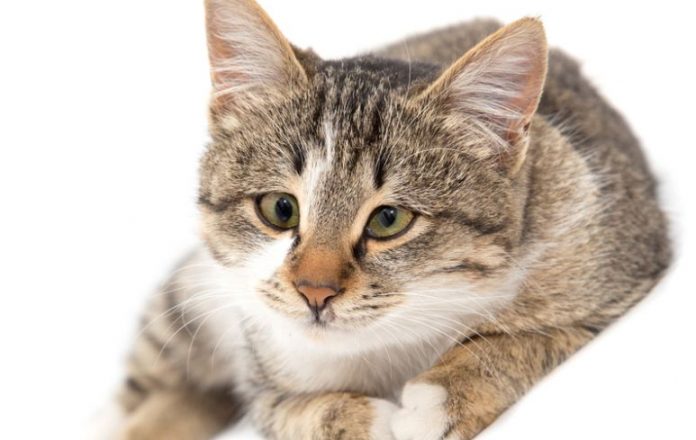Cats are fastidious animals. They like things clean and apparently one thing they like clean the most is themselves.
Therefore, they spend an excess amount of time just grooming.
The act of licking themselves helps to untangle and remove loose hair. Their tongues are specifically made for the task.
They are covered with little bumps and toward the center of the tongue is tiny barb-like bumps that act to snag the hair.
Unfortunately, this habit of grooming can lead to the formation of hairballs.
Cats are unable to digest the hair they swallow. However, they are able to have the hair pass through the digestive system in small amounts.
A problem is caused if the cat is most likely low on fiber, which renders it incapable of passing the hair.
The hair builds up and forms a hairball. The hairball can develop either in the stomach or toward the back of the throat.
The distressed cat begins to cough and attempts to throw-up the hairball. For the loving cat owner, the gagging and retching is worrisome not to mention the annoying cleanup afterwards.
While the occasional hairball is probably nothing to be too alarmed about, frequent hairballs could be a cause for concern.
Constant hairballs can result in digestive track troubles such as loss of appetite and constipation.
You cannot eliminate your cat from swallowing all its loose hair. However, there are actions you can take and natural remedies along with commercial products that you can use.
The best way is combing or brushing your cat to prevent swallowing as much hair as possible in the first place.
Longhaired cats should be combed or brushed daily and shorthairs probably only require it once or twice a week.
If your cat needs more assistance with its hairballs, there are commercial products that can be applied to the top of its front paws.
The cat will attempt to lick these off; which will aid in the hair passing through the digestive system.
People have used other similar lubricants such as Crisco All Vegetable Shortening, mayonnaise or butter as a substitute to these store bought products.
Yet be careful, because the use of these can cause other digestive problems. Then again, some people have used Vaseline though this also should be applied only occasionally.
It is recommended that you check with your veterinarian on the use, frequency and amount of any of these products before administering them to your cat.
You may also feed your cat specially made cat food diets and treats that are intended to prevent the development of hairballs.
Another interesting solution is to mix in about a teaspoon of canned pumpkin to your cat’s normal food.
One more method used as a preventive is to feed your cat grass a couple of times a week. You can grow the grass indoors.
Rye, wheat or oat grasses are the best types to use and can be purchased at pet stores or on the Internet. Do not feed your cat grass from a chemically treated lawn.
Still, it must be noted that cats will throw-up for various reasons. Some of these may be from serious underlying conditions.
Therefore, before attempting any of these remedies, it is advised that you consult with your veterinarian to rule out any other illness and to see which, if any of these solutions should be tried.
Along with your vet’s help and one or more of these suggestions, it is possible that your cat will be able to live virtually hairball free.

